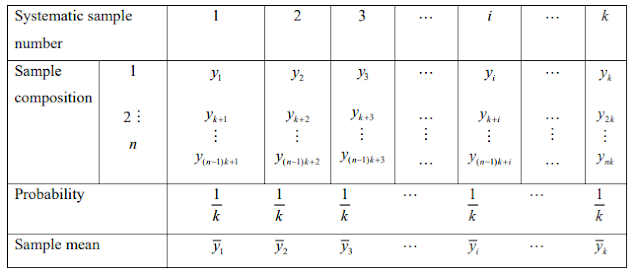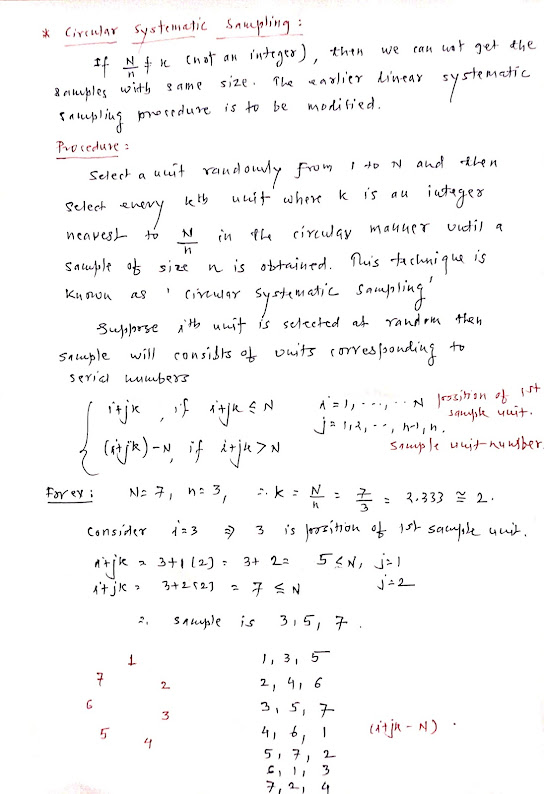Systematic Sampling
2.1 Systematic Sampling
The systematic sampling technique is
operationally more convenient than simple random sampling. It also ensures, at
the same time that each unit has an equal probability of inclusion in the
sample. In this method of sampling, the first unit is selected with the help of
random numbers, and the remaining units are selected automatically according to
a predetermined pattern. This method is known as systematic sampling.
Suppose
the N units in the population are numbered 1 to N in some order. Suppose
further that N is expressible as a product of two integers n and k, so that
N=nk.
2. Suppose it is
i.
3. Select the
first unit, whose serial number is i.
4. Select every
kth unit after ith unit.
The sample will
contain I, i+k, i+2k,i+3k,.....,i+(n-1)k serial number units.
Thus, the first unit is selected at
random and other units are selected systematically. This systematic sample is
called kth systematic sample and k is termed as a sampling interval.
This is also known as linear systematic sampling.
***
Real-life
situations where systematic sampling is used:
1. Quality control in manufacturing: Every 10th product off the assembly line is inspected for quality and defects.
2. Auditing: Every 20th invoice is selected for verification to ensure accuracy and compliance.
3. Market research: Every 5th customer entering a store is approached for feedback on products or services.
4. Crop yield estimation: Every 10th field in a region is selected to estimate crop yield and productivity.
5. Traffic surveys: Every 10th vehicle passing a certain point is counted to estimate traffic volume and flow.
6. Medical research: Every 5th patient with a specific condition is selected for a clinical trial or study.
7. Election polling: Every 10th voter in a precinct is interviewed to estimate election outcomes.
8. Customer satisfaction surveys: Every 20th customer is selected to participate in a satisfaction survey.
9. Environmental monitoring: Every 5th water sample from a river is tested for pollution levels.
10. Accounting audits: Every 10th transaction is selected for verification to ensure accuracy and compliance.
Systematic sampling is useful when you want to ensure representation from a population and make inferences about the population as a whole.

















Comments
Post a Comment